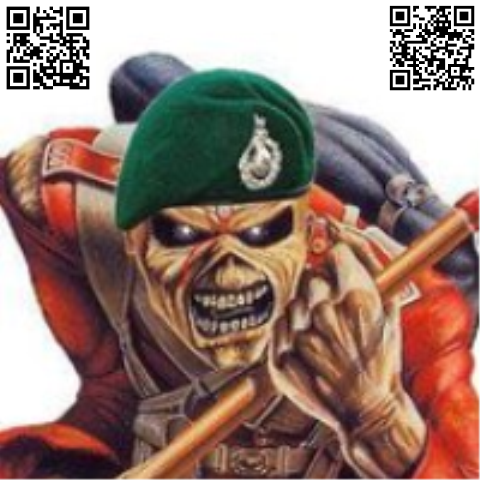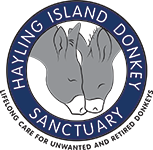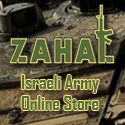ORAL HISTORY OF A RETIRED ROYAL MARINE
British Marine (Known as JG) and NCO served with 40 Commando, Royal Marines in GB, Northern Ireland and Cyprus, 1972-1975; served aboard HMS Ashanti in GB coastal waters, 1976-1977; served with Air Sqdn, 3rd Commando Bgde, Royal Marines in GB, Northern Ireland, Norway and during Falklands War, 1978-1982; served with 42 Commando, Royal Marines in Northern Ireland, 1983; various postings as officer with Royal Marines in GB, 1984-2002
![]()
(few seconds delay at beginning of each audio)
CONTENT DESCRIPTION REEL 1 of 8
REEL 1 Background in Swansea and Dartmoor, GB, 1951-1971: family; education. Aspects of enlistment and training with Royal Marines in GB, 1971: enlistment; character of recruits; pattern of training at Royal Marine Depot, Deal; drop out rate on course; pattern of commando training at Commando Training Centre, Lympstone; use of tunnels in training; progressive nature of commando training; passing out parade. Recollections of operations as marine with 40 Commando, Royal Marines in Belfast, Northern Ireland, 1972: joining unit in Northern Ireland; deployments to Northern Ireland, 1972-1975; allocation of area of operations; degree of knowledge of area; character of patrols; protective clothing; wearing of beret; attitude of Irish Republicans towards military; orchestration of situation by Provisional Irish Republican Army (PIRA); urban environment in Northern Ireland; removal of Irish flags; stoning by children; incident of coming under fire in Brown’s Square.
![]()
CONTENT DESCRIPTION REEL 2of 8
REEL 2 Continues: explanation of term ‘Goffer Wallah’; description of camp at Brown’s Square; effects of keeping boots on for a week; other duties; duration of tour and leave; arrival at Brown Square; attitude of older members of troop to urban environment. Recollections of operations as marine with Intelligence Section, 40 Commando, Royal Marines in Belfast, Northern Ireland, 1973: move to Belfast on advance party; composition of section; nature of relations with members of Ulster Defence Association (UDA); relations with Catholic community; degree of change in situation between 1972 and 1973 tours; character of arrest and search operations; attitude of marines to search operations; Provisional Irish Republican Army (PIRA)’s use of ‘Dickers’; ‘mouseholing’ of houses; Provisional Irish Republican Army (PIRA)’s method of sniping; lack of no-go areas in Belfast; female and youth sections of Provisional Irish Republican Army (PIRA) and Ulster Defence Association (UDA); areas where main antagonism would take place; Provisional Irish Republican Army (PIRA)’s bombing of city centre of Belfast; character of New Lodge area and sectarian division of city; situation during Protestant marching season; volunteering for special patrol groups with Royal Ulster Constabulary (RUC).
![]()
CONTENT DESCRIPTION REEL 3 of 8
REEL 3 Continues: Aspects of operations as NCO with 40 Commando, Royal Marines in Cyprus, 1974: deployment to Cyprus; situation in Cyprus after Turkish invasion; duties in Sovereign Crown Territory (SCT); state of Turkish refugees; attitude to ethnic cleansing taking place; rapid redeployment on verge of return to GB. Aspects of operations as NCO with 40 Commando, Royal Marines in Belfast, Northern Ireland, 1975: deployment to Belfast; manifestation of lawlessness; duties as corporal; changes in operational procedures; technique for exiting barracks; patrolling; clothing worn on patrol; duration of patrols; attitude to posting as recruit instructor at Commando Training Centre, Lympstone, 1975-1976. Aspects of period as NCO with Royal Marines aboard HMS Ashanti in GB coastal waters, 1976-1977: drafting to ship; duties of Royal Marines on board; incident of ship catching fire in Bristol Channel; fate of ship and return to 40 Commando, Royal Marines; selection procedure to become air crew. Recollections of period as NCO with Air Sqdn, 3rd Commando Bde, Royal Marines in GB, Northern Ireland and Norway, 1978-1982: organisation of Air Sqdn; role of unit’s Westland Scout and Aerospatiale Gazelle Helicopters; background to posting to observers course.
![]()
CONTENT DESCRIPTION REEL 4 of 8
REEL 4 Continues: pattern of observers course; navigation; learning to fly helicopter; attitude to flying duties; vehicle recognition exercises; posting to Northern Ireland, 1979; operational area; duties operating Aerospatiale Gazelle; threats to helicopters; character of Aerospatiale Gazelle; reasons for changing aircrew and helicopters; mixture of NCO and officer pilots; daily routine briefings; restrictions on flying; ground duties in operations room; shift pattern; question of straying over border into Irish airspace; equipment and armament carried in helicopter; searching for vehicle involved in terrorist incident; limits on pilot flying hours; firing wire guided missiles from Westland Scout.
![]()
CONTENT DESCRIPTION REEL 5 of 8
REEL 5 Continues: role of air gunner; firing live missiles during course on Otterburn Ranges; procedure for removal of hung up missiles; training at French Mountain Flying Training School; reasons for transporting helicopters by sea to Norway; dealing with climatic conditions in Norway; exercises in Norway. Recollections of operations as air gunner with Air Sqdn, 3rd Commando Bde, Royal Marines during Falklands War, 4/1982-6/1982: hearing news of deployment to Falkland Islands, 4/1982; unit driver who stowed away on ship; embarkation on board HMS Fearless; preparations during voyage between GB and Ascension Island; suitability of Westland Scout for campaign; training ashore at Ascension Island; incident with unit Aerospatiale Gazelle; cross-decking onto RFA Sir Tristram; relations with Royal Fleet Auxiliary personnel; issue of equipment; problems with water supply on board RFA Sir Tristram; attachment to 45 Commando, Royal Marines; arrival in San Carlos Water; first flight transporting mortars onto hill; establishing base ashore; establishing crews and teaming up with Captain Jeff Niblett; tasking of jobs; delivering rations to reconnaissance troop; sight of shot down Argentinean FMA 1A 58 Pucara aircraft.
![]()
CONTENT DESCRIPTION REEL 6 of 8
REEL 6 Continues: loss of unit helicopters; degree of knowledge of FMA 1A 58 Pucara; types of work engaged in; attempts to hide helicopter on ground; navigation around island; under fire on board ship; threat of being caught over water; description of cocoon like nature of helicopter; relations with pilot Captain Jeff Niblett; hours operated; weather conditions; sleeping arrangements during campaign; attachment of helicopter to 2nd Parachute Regt, 27/5/1982; evacuating wounded Argentinean POW, 27/5/1982; evacuating casualties in Westland Scout; sight of burning maintenance area at Ajax Bay, 27/5/1982; allocation as supporting helicopter for 2nd Bn Parachute Regt attack on Goose Green; resupply flights; duration of flights and dropping of supplies; discovery of situation at Goose Green; threat of anti-aircraft fire; degree of protection available over battlefield; supplying ammunition; hearing of wounding of Colonel Herbert ‘H’ Jones; formation flown towards Goose Green; sight of FMA 1A 58 Pucaras; sighting of his helicopter by FMA 1A 58 Pucara.
![]()
CONTENT DESCRIPTION REEL 7 of 8
REEL 7 Continues: communicating with pilot during attacks by FMA 1A 58 Pucaras; pitching forward of helicopter by explosion; touching down near Camilla Creek House; sight of smoke and flight to find wreckage of second Westland Scout; discovery of body Lieutenant Richard Nunn; evacuating wounded Sergeant Bill Belcher; visit to Sergeant Bill Belcher in hospital; recovery of Lieutenant Richard Nunn’s body from wreckage; how Sergeant Bill Belcher survived crash; his attitude to prospect of death; effect of casualties in close-knit unit; types of missions flown during rest of war; attitude to Royal Navy decision to not risk Westland Sea King helicopters; sense of vulnerability after events of 27/5/1982; evacuating troops from a forward slope; suitability of Westland Scout for operations; flying senior officers; example of black humour; flying into Port Stanley on surrender and reaction to number of Argentinean POWs, 14/6/1942; duties after surrender.
![]()
CONTENT DESCRIPTION REEL 7 of 8
REEL 8 Continues: return to GB on board SS Canberra. Aspects of operations as NCO with 42 Commando, Royal Marines in Northern Ireland, 1983: posting to unit; nature of operations; changes in operations between 1970s and 1980s; reasons for not using road transport; threat of culvert bombs on border; terrain on border; awareness of hearts and minds campaign; behaviour of population on border; question of border infringements; lack of contact with southern Irish authorities; provision of grenade launcher on patrol; incident of marine standing on bomb; booby-trapping of petrol tankers. Aspects of various postings as officer with Royal Marines in GB, 1984-2002: commissioning; pattern of career; attending Royal Naval College at Greenwich, 1992; motivation of marines; appointment to Ministry of Defence, London; final appointment as Area Officer to Sea Cadets in North West England; attitude to having served with Royal Marines.
![]()
Above Audio History copied from “IWM” Imperial War Museum Website
![]()







